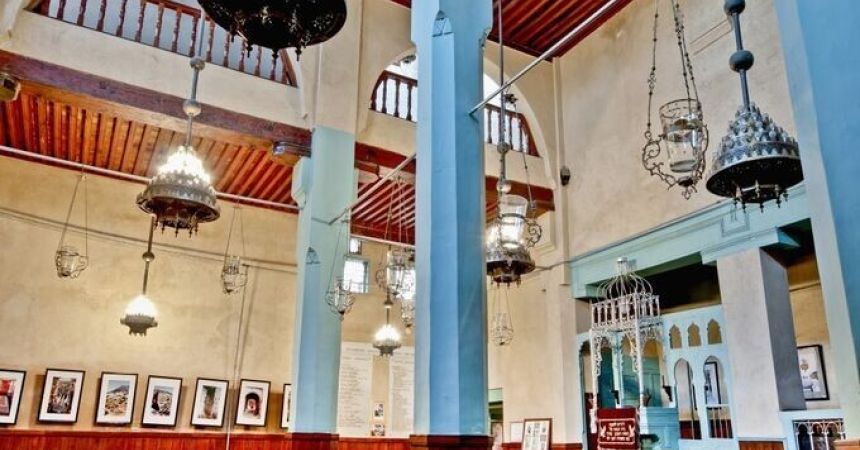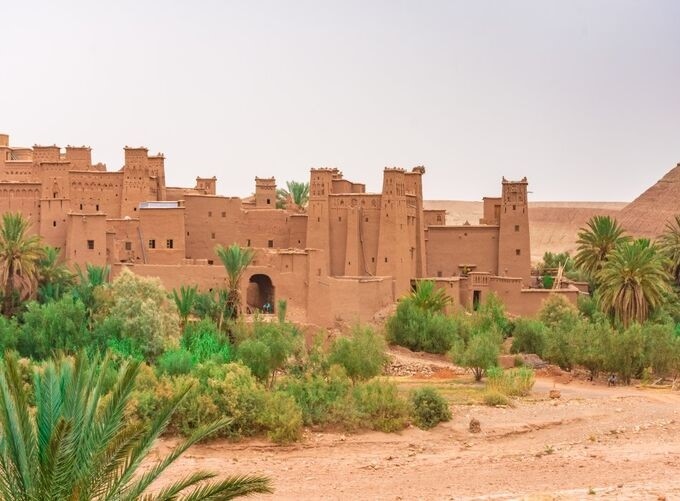
Wonders of Morocco: A Traveler’s Discovery Journey
Morocco, a country of mesmerizing contrasts and vibrant culture, offers an endless array of experiences. From the bustling medinas and ancient ruins to the tranquil deserts and majestic mountains, Morocco is a destination that captivates the hearts of travelers. This guide will take you through the wonders of Morocco, highlighting its top destinations, cultural experiences, and practical tips for making the most of your visit.
The Imperial Cities
Marrakech
Marrakech, known as the "Red City," is a bustling hub of activity and one of Morocco's most popular destinations. The heart of the city is Jemaa el-Fnaa, a lively square that transforms into a vibrant marketplace at night.
Must-See Attractions:
- Jemaa el-Fnaa: A UNESCO World Heritage site filled with food stalls, musicians, and performers.
- Koutoubia Mosque: The largest mosque in Marrakech, known for its impressive minaret.
- Bahia Palace: A beautiful 19th-century palace with lush gardens and intricate decorations.
- Majorelle Garden: A serene garden designed by French painter Jacques Majorelle and later owned by Yves Saint Laurent.
Fes
Fes, often considered the cultural and spiritual heart of Morocco, is home to one of the world’s oldest universities and a well-preserved medieval medina.
Must-See Attractions:
- Al-Qarawiyyin University: Founded in 859 AD, it's the oldest continuously operating university in the world.
- Bou Inania Madrasa: Known for its stunning Marinid architecture.
- Chouara Tannery: Witness the traditional leather dyeing process.
- Fes el-Bali: The oldest part of the city, a labyrinth of narrow alleys and historic buildings.
Rabat
As the capital city of Morocco, Rabat offers a blend of modernity and history.
Must-See Attractions:
- Hassan Tower: An unfinished minaret of a grand mosque.
- Mausoleum of Mohammed V: A beautifully decorated royal tomb.
- Kasbah of the Udayas: A picturesque fortress with blue-and-white houses and stunning views.
Meknes
Meknes, one of Morocco’s four imperial cities, is known for its grand architecture and historical significance.
Must-See Attractions:
- Bab Mansour: One of the grandest gates in Morocco.
- Place El-Hedim: A large square in the medina.
- Mausoleum of Moulay Ismail: The resting place of the Sultan who made Meknes his capital.
Natural Wonders
Sahara Desert
Travel around Morocco wouldn't be complete without experiencing the Sahara Desert. The vast expanse of golden sand dunes offers a unique and unforgettable adventure.
Activities:
- Camel Trekking: Take a camel ride across the dunes to watch the sunset or sunrise.
- Desert Camping: Spend a night in a traditional Berber tent under the stars.
- Sandboarding: Try this fun activity on the dunes.
Atlas Mountains
The Atlas Mountains offer stunning landscapes and opportunities for hiking and trekking. Whether you're an experienced climber or a casual hiker, there's a trail for you.
Highlights:
- Mount Toubkal: The highest peak in North Africa.
- Imlil Village: A popular starting point for treks.
- Azzaden Valley: Known for its picturesque landscapes and traditional Berber villages.
Dades Valley and Todra Gorge
These regions offer some of the most dramatic landscapes in Morocco.
Highlights:
- Dades Valley: Known for its winding roads and stunning rock formations.
- Todra Gorge: A spectacular canyon with towering cliffs.
Coastal Areas
Morocco's coastline offers beautiful beaches, charming towns, and opportunities for water sports.
Highlights:
- Essaouira: Known for its relaxed atmosphere, historic medina, and beautiful beaches.
- Agadir: A modern city with a beautiful sandy beach and lively atmosphere.
Cultural Experiences
Moroccan Cuisine
Moroccan cuisine is a feast for the senses, with its rich flavors and aromatic spices. From street food to fine dining, there are endless culinary delights to explore.
Traditional Dishes:
- Tagine: A slow-cooked stew made with meat, vegetables, and a variety of spices.
- Couscous: Steamed semolina grains typically served with meat, vegetables, and a flavorful broth.
- Pastilla: A savory-sweet pie made with layers of thin pastry, filled with pigeon or chicken, almonds, and spices.
- Harira: A hearty soup made with tomatoes, lentils, chickpeas, and lamb.
Festivals and Events
Morocco hosts numerous festivals throughout the year, offering a unique glimpse into the country's rich cultural heritage.
Notable Festivals:
- Fes Festival of World Sacred Music: Features performances by artists from various cultural and religious backgrounds.
- Marrakech International Film Festival: Attracts filmmakers and celebrities from around the world.
- Rose Festival in El Kelaa M’Gouna: Celebrates the rose harvest with parades, music, and dance.
- Gnaoua World Music Festival in Essaouira: Celebrates Gnaoua music with performances by international and local artists.
Shopping in the Souks
The souks (markets) of Morocco are a shopper's paradise, offering everything from spices and textiles to pottery and jewelry.
Top Souks:
- Marrakech Souks: A maze of narrow alleys filled with a wide variety of goods.
- Fes Souks: Known for traditional crafts, including pottery, leather goods, and textiles.
- Casablanca Central Market: A bustling hub of activity, offering fresh produce, spices, and traditional crafts.

Hammams
A Tour to Moroccan hammam (bathhouse) is a must-do experience. It’s a place to relax, cleanse, and rejuvenate your body and mind.
Experience:
- Traditional Hammam: Offers a more authentic experience with separate areas for men and women.
- Tourist Hammam: Often located in riads and hotels, offering a more luxurious experience with additional services like massages and beauty treatments.
Historic Sites and Architecture
Ait Benhaddou
Ait Benhaddou Vacation is an ancient fortified village and a UNESCO World Heritage site. It has been used as a backdrop for many films and TV shows, including "Gladiator" and "Game of Thrones."
Highlights:
- The Kasbah: Explore the well-preserved mudbrick ksar (fortified village).
- Scenic Views: Climb to the top of the village for panoramic views of the surrounding area.
Volubilis
Volubilis is an ancient Roman city and a UNESCO World Heritage site, known for its well-preserved ruins and stunning mosaics.
Highlights:
- Triumphal Arch: A grand arch that once marked the entrance to the city.
- Basilica: The remains of a large public building used for judicial and other official purposes.
- Mosaic Floors: Beautifully preserved mosaics depicting scenes from Roman mythology.
Hassan II Mosque
Located in Casablanca, the Hassan II Mosque is one of the largest mosques in the world and a stunning example of modern Moroccan architecture.
Highlights:
- The Minaret: At 210 meters, it's the tallest minaret in the world.
- Interior Decor: The mosque's interior is adorned with intricate tile work, marble floors, and a retractable roof.
Kasbah of the Udayas
Located in Rabat, the Kasbah of the Udayas is a picturesque fortress with narrow alleys, blue-and-white houses, and stunning views of the Atlantic Ocean.
Highlights:
- Andalusian Gardens: Beautiful gardens within the kasbah.
- Oudayas Museum: Showcases Moroccan art and traditional crafts.
Adventure Activities
Hiking and Trekking
The Atlas Mountains offer a range of trails for hikers and trekkers of all levels.
Popular Trails:
- Toubkal Summit: A challenging trek to the highest peak in North Africa.
- Azzaden Valley: A scenic trail through traditional Berber villages.
- Ifrane National Park: Known for its cedar forests and diverse wildlife.
Water Sports
Morocco's coastline is perfect for water sports, including surfing, windsurfing, and kitesurfing.
Top Spots:
- Essaouira: Known for its consistent winds and vibrant kitesurfing scene.
- Taghazout: A small fishing village turned surf haven with some of the best waves in Morocco.
- Agadir: Offers a range of water sports activities and a beautiful sandy beach.
Off-Roading
Explore Morocco's diverse landscapes with an off-roading adventure.
Popular Routes:
- Merzouga to Zagora: A thrilling drive through the Sahara Desert.
- Atlas Mountains: Explore the rugged terrain and remote Berber villages.
- Dades Valley: Navigate the winding roads and dramatic rock formations.
Practical Tips for Visiting Morocco
Language
Arabic and Berber are the official languages, but French is widely spoken. Learning a few basic phrases in Arabic or French can be very helpful.
Currency
The Moroccan Dirham (MAD) is the local currency. It’s advisable to carry some cash for small purchases as not all vendors accept credit cards.
Dress Code
Morocco is a conservative country, so dress modestly, especially in rural areas and religious sites.



